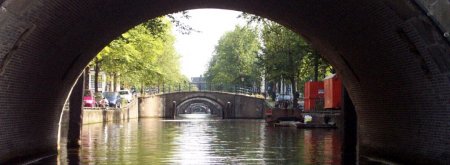Bridges to the Gospel
Bridges exist in every era, but they can look different from those in the past. Changes in culture may make some ways of doing things less effective... What was yesterday’s bridge may be today’s barrier - eg. certain styles of meeting, worship patterns, styles of preaching, mass rallies.
If we put our faith in certain apologetics methods rather than in the Christ who speaks to the human heart, we may communicate with some, but miss millions.
Bridges are important for what used to be called ‘pre-evangelism’. Today this simply means that we need to provide ways of crossing the great cultural chasm between the worldview of christianity and the worldviews of our contemporary world, so that the Gospel can be heard for what it is.
Contemporary bridges
- The postmodernity of the young
- A new involvement in spirituality
- The fascination with the narrative
- Cultural openness to worldview questions - film, novel, music
- The ambiguity about the self and personal identity
- Shared issues of justice, meaning, compassion and suffering
- The hopelessness of life-after-God.
How do we use the bridges?
For two-way traffic
Bridges are not simply to transport non-Christians to faith. Nor are they so that Christians can go over into foreign territory and tell people to repent. They also enable Christians to cross over into a non-Christian cultural context and begin to understand it from within. Until we have some knowledge of who we are speaking to, and what matters to them, we are less likely to be effective ambassadors for the Gospel.
For regular use
Bridges give regular access to what lies beyond rather than offering people a one-way, non-returnable ticket. There will be people who stand on the bridge a long time and not know which way to finally go. Many non-Christians may need to cross any bridge many times over, checking out the territory and making sure it is really inhabitable, before they decide to take up residence on ‘the other side’.
For journeys with friends
We need to seek out the ‘people of peace’ (Luke 10) in building bridges to the Gospel for these people to open up their networks to us and introduce us to many others. Some of them will also journey with us and enrich us greatly on the way, but not come to our destination. We pray for them, bless them, and leave them in the mercy of God. We do not know which other Christians might encounter them later and help them to continue the journey. Others may publicly (and sometimes vociferously) refuse to travel with us, but for all their insistence, we can see they are quietly following behind. Yet others will be convinced of the truth of Christ whilst they are with us, and become disciples.
With prayerful creativity
We use all the resources that the creation offers us. The Gospel can be communicated through many means in addition to preaching, teaching, and debating. Drama, music, film, story-telling, novels are all key areas open to Chrisians in a postmodern culture, and can be used as key tools in apologetics. Conversational apologetics are also intrinsic to the way we reach others today.
Conclusion
The greatest bridge to the Gospel is the longing of the human heart. Wherever there is yearning for hope, peace, meaning, fulfilment and love, the Holy Spirit can erect, through us, a bridge which takes people into the depths and compassion of God.



